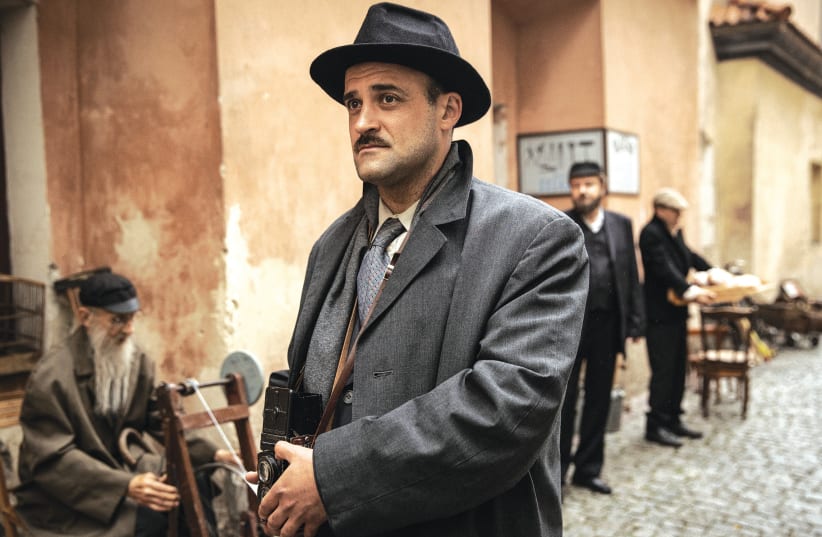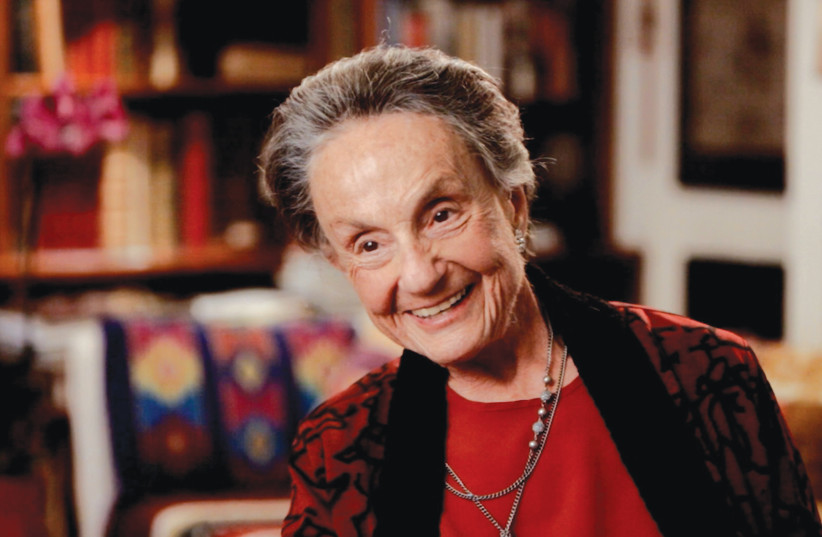Twenty-five years ago, when they were both living in Santa Barbara, California, Israeli-American documentary filmmaker Laura Bialis (Refuseniks, Rock in The Red Zone) met Mara Kohn Vishniac, born in Berlin in 1926.
While they waited for a lecture by Elie Wiesel to begin, Mara told Bialis about her escape from Berlin as a child in 1940. She also told her about her father, photographer Roman Vishniac.
Bialis was a photographer and had studied photography but she’d never learned about Roman Vishniac. She first saw his photos when Mara invited her to her home. The pictures were everywhere – on the walls and in storage. A portfolio of prints of Albert Einstein fell out of the closet.
Telling her story on the big screen
Ever since that fateful meeting, Laura has wanted to tell the photographer’s story. She’s finally told it in her documentary Vishniac, which premiered in New York on January 19 and will open in Los Angeles on February 2, after a successful film festival run.
Roman Vishniac is best known for his photographs of Jewish life in Eastern Europe from 1935-1938, on commission from the Joint Distribution Committee (the “Joint” or JDC).
He’s also known for his microscopic photos of the natural world, including insects, amino acids, and blood circulating inside a hamster’s cheek pouch. In 1960, the National Science Foundation gave him around $100,000 to produce 24 nature films for high schools and 16 for colleges. If you went to a US high school in the 1960s, you probably watched these films.
Vishniac was a storyteller and often a “liar.” “But,” said Mara, “it turns out that some of my father’s stories were true.”
It’s said that “pictures don’t lie,” but sometimes the captions, dates, and place names on Vishniac’s photos are either not consistent or romanticized. Bialis says that photojournalism in Vishniac’s time wasn’t overly concerned with accuracy. Photography was meant to tell a story.
“It’s getting at a more universal truth,’ Bialis says.
For example, some of Vishniac’s photos were labeled “the Warsaw Ghetto,” but he only photographed Warsaw before and after the ghetto existed. However, the Jews who lived in those streets were already suffering before the ghetto was created. In some cases, it’s not clear whether Vishniac chose the captions or whether they were added by newspaper editors.
According to a scholar of early 20th-century photography, photographers like Vishniac, Walker Evans, and Dorothea Lange weren’t documenting the world in a neutral way. They were documenting it in order to change it.
Vishniac’s photos for JDC were intended to raise money to help Eastern European Jews. His images show them as poor and backward. But theirs was also a world of deep spirituality and essential Jewishness.
“The tendency of the hassidic movement is to become closer to God,” Vishniac wrote. “Song, dance, and music were focuses of prayer.”
Vishniac didn’t document the horrors of the Holocaust. He managed to escape Europe with his family via Lisbon in 1940 and made his way to New York. He hustled to get work and attract attention to the plight of Europe’s Jews.
He sent his photos to president Franklin D. Roosevelt and invited first lady Eleanor Roosevelt to his exhibitions.
He went to Princeton, New Jersey and arrived at the office of Albert Einstein unannounced, his daughter Mara in tow, and asked to take the Nobel Prize-winner’s photo. He claimed to have taken a photo of the moment Einstein “invented the atom bomb,” but this was a fabrication.
VISHNIAC’S PHOTOS collected in books like Polish Jews: a Pictorial Record (1947) and A Vanished World (1983) document a lost culture and civilization and the amazing faces of some of the soon-to-be murdered millions.
“Vishniac’s photographs are a way to celebrate these faces, these people,” says Bialis.
She says her documentary isn’t a Holocaust film. “It’s a way of celebrating what’s not there any more.”
Vishniac is narrated by Mara, and it’s also the story of her relationship with her father. Bialis’s own daughter plays Mara as a child in dramatized scenes.
As the Nazis were on the rise in 1930s Berlin, Vishniac posed his daughter in front of their posters to document them but avoid scrutiny. He could always claim that he was just taking a picture of his daughter.
As Jews in Germany were increasingly excluded from schools, jobs, and the normal activities of German society, Vishniac documented the Jewish community’s response. Zionist camps were set up to train white-collar workers to cultivate farms in preparation for their hoped-for immigration to the Land of Israel, then known as Palestine and under the British Mandate. This was a form of psychological and practical resistance to Nazi policies.
Jewish leaders, many of whom lost their positions in business and academia, started to work on Jewish projects – raising the quality of leadership.
Mara was reluctant, at first, to tell her father’s story on film. Her feelings about him were complicated. Her parents had been estranged and hadn’t seen each other for years (her father had a non-Jewish mistress) when they were forced to reconnect during the war in order to escape Europe as a family unit.
Vishniac often told Mara he was disappointed in her, and she married early to escape his disapproval. In contrast, Vishniac doted on his only son, Wolff, a microbiologist who died in a fall from a cliff in Antarctica while doing research for a mission to Mars.
Only when Mara learned that she was dying of cancer did she agree to open up. “What the hell,” she said. “All of these people are dead anyway.”
Bialis said the film has taken on new meaning for her since the tragic events of October 7, 2023.
Her own children were in Sderot on the day of the Hamas attack. She had married a man from Sderot and lived there for a time. Her 2014 documentary Rock in the Red Zone is about musicians in the city, only half a mile from Gaza that has long been pummeled by terrorist missiles.
She notes that Vishniac took pictures of displaced people in camps after World War II. When she went to hotels by the Dead Sea hosting the survivors of October 7, it felt like one of those photos.
“The faces were the same. The people in the hotel had nowhere else to go. Every evening, they have a meeting and announce which bodies have been identified.”

